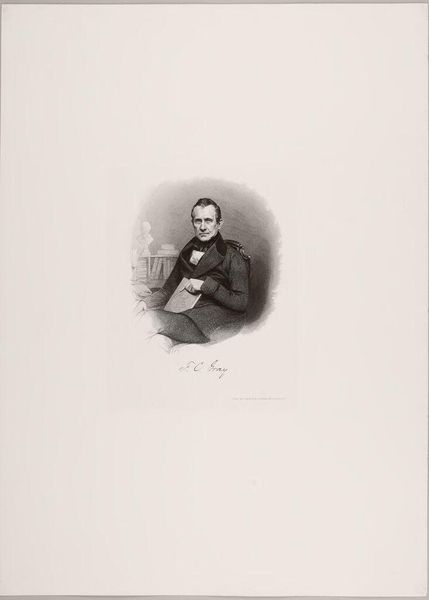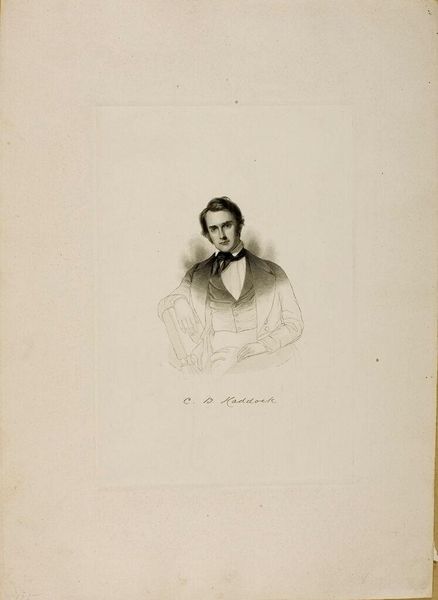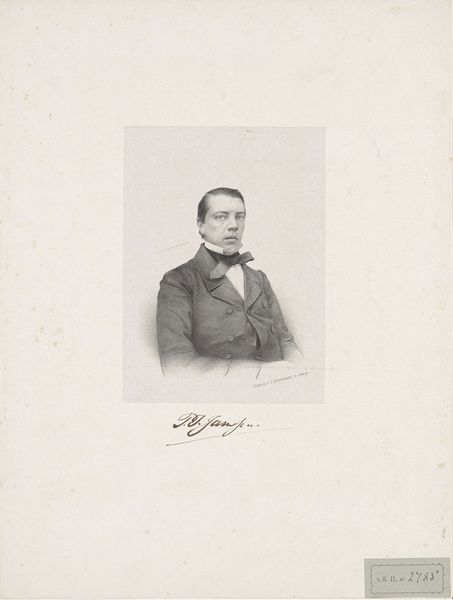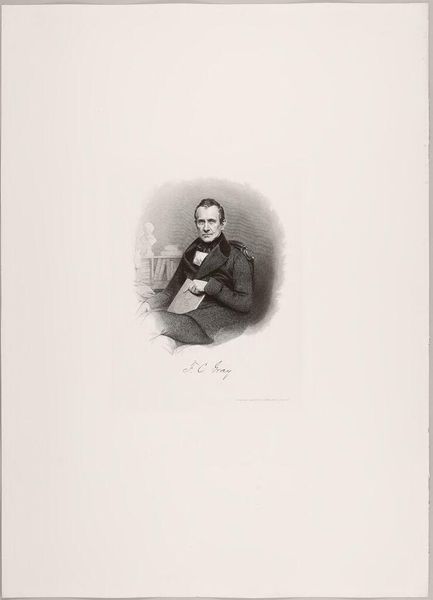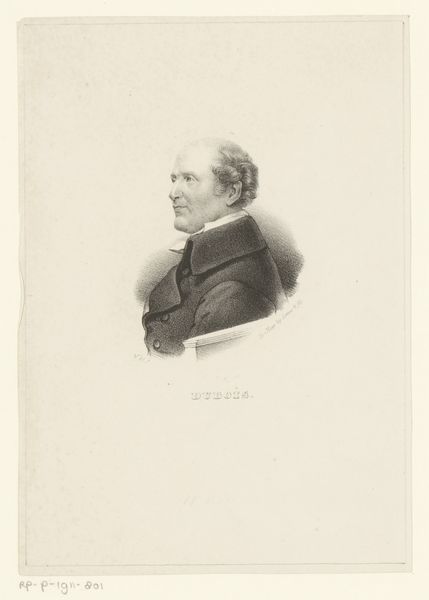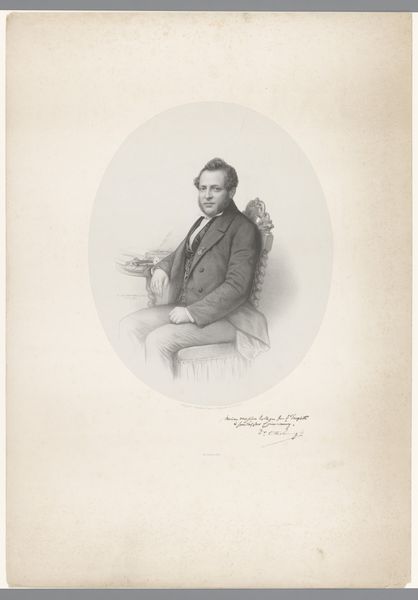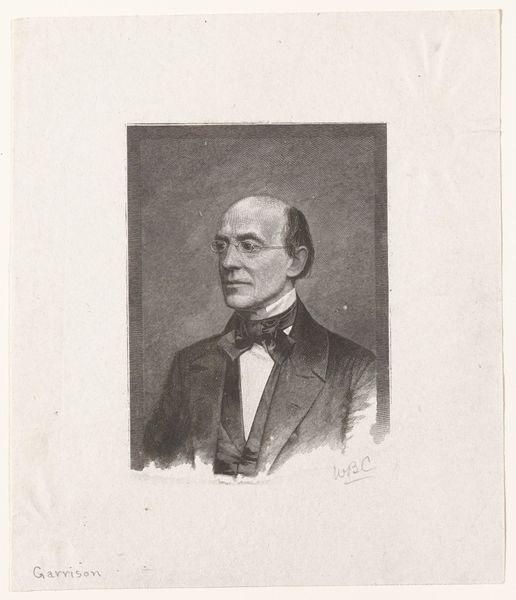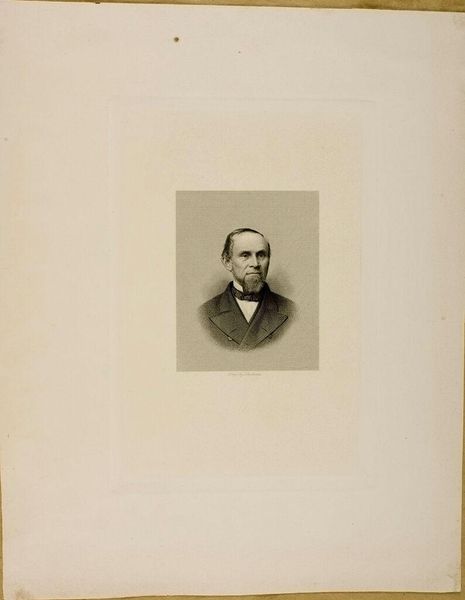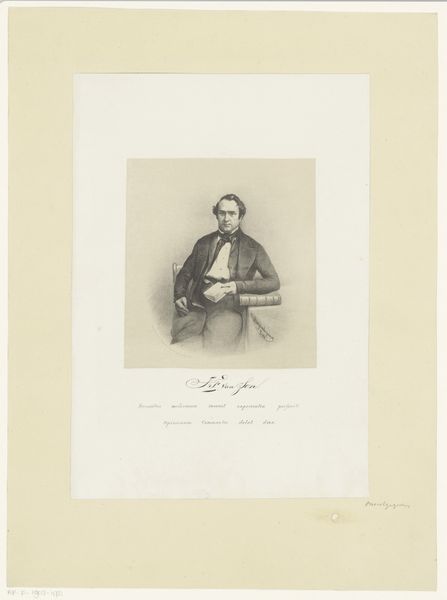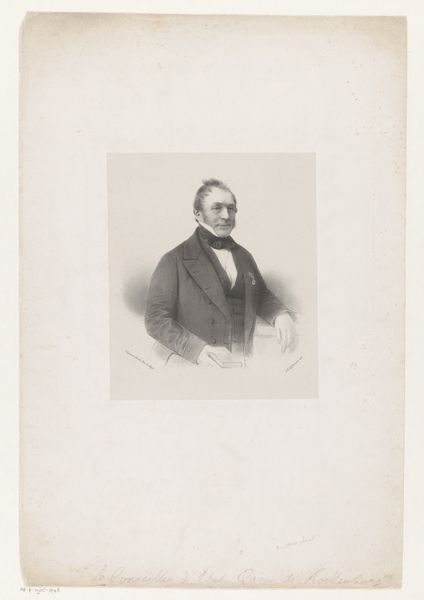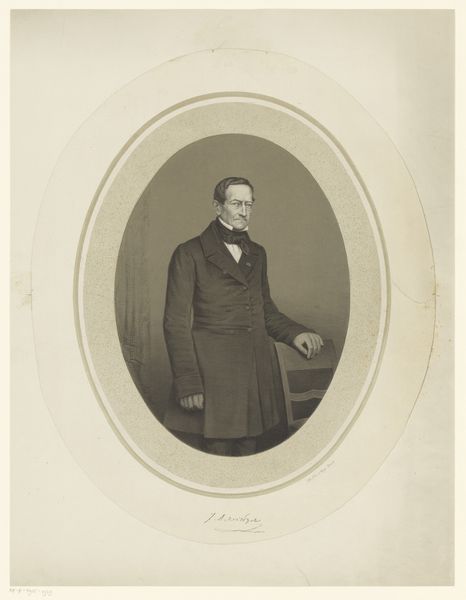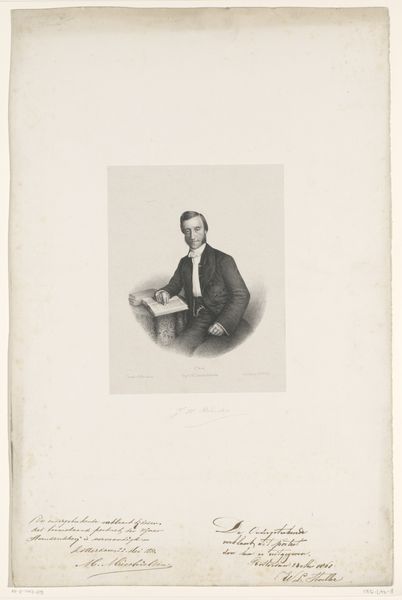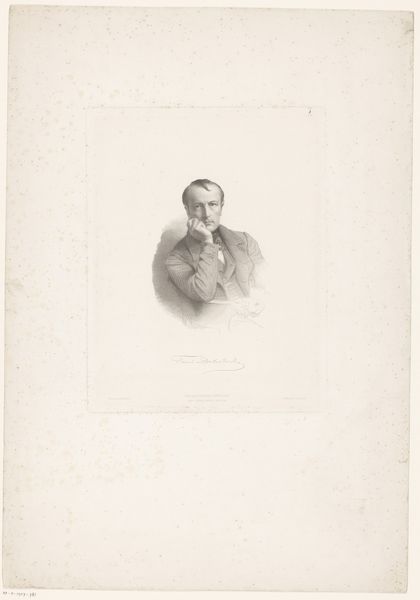
pencil drawn
shape in negative space
light pencil work
pencil sketch
charcoal drawing
negative
charcoal art
pencil drawing
limited contrast and shading
charcoal
Dimensions: 7 3/8 x 5 1/2 in. (18.73 x 13.97 cm) (image)
Copyright: No Copyright - United States
Curator: Standing before us is a pencil drawing from around the 19th century by David Octavius Hill, entitled “John Gibson Lockhart.” Editor: My immediate impression is one of austerity. The severe profile, the stark collar – it speaks of restraint and intellect, no? Curator: Absolutely. Hill's strategic use of light is particularly noteworthy. The chiaroscuro effect focuses the gaze directly on Lockhart's face. This tight control of tone guides our interpretation of the subject, amplifying the planes of the face and underscoring what might be deemed intellectual rigor. Editor: Considering Lockhart was a prominent literary figure and editor himself, one can presume that's entirely the point. Think of the impact of figures like him had in shaping cultural discourse! The composition serves to immortalize and ennoble, really, presenting him to posterity. It does, in many ways, perform cultural work. Curator: Indeed. Also, note the economy of line. Hill manages to convey a wealth of information with minimal strokes. The subtle gradations of shadow create depth and volume. This simplification allows the essential form to dominate. It's about a type, a social category perhaps, reduced to a formal elegance. Editor: And there's also an inherent paradox here, don’t you think? This intimacy of a drawn portrait, and the fact of its making is placed on a public figure to be displayed at the institute. Consider, as well, the role portraiture played at a time of growing media development and changing conceptions of visual culture. Curator: That contrast between personal study and public declaration highlights an interesting tension. It prompts us to consider the different modalities of seeing inherent in viewing art across time. Editor: It also causes me to contemplate who Lockhart, and by extension, Hill thought that they were performing for, beyond themselves. Curator: These formal choices and contextual considerations surely grant us a deeper engagement with Hill's image of Lockhart.
Comments
No comments
Be the first to comment and join the conversation on the ultimate creative platform.
